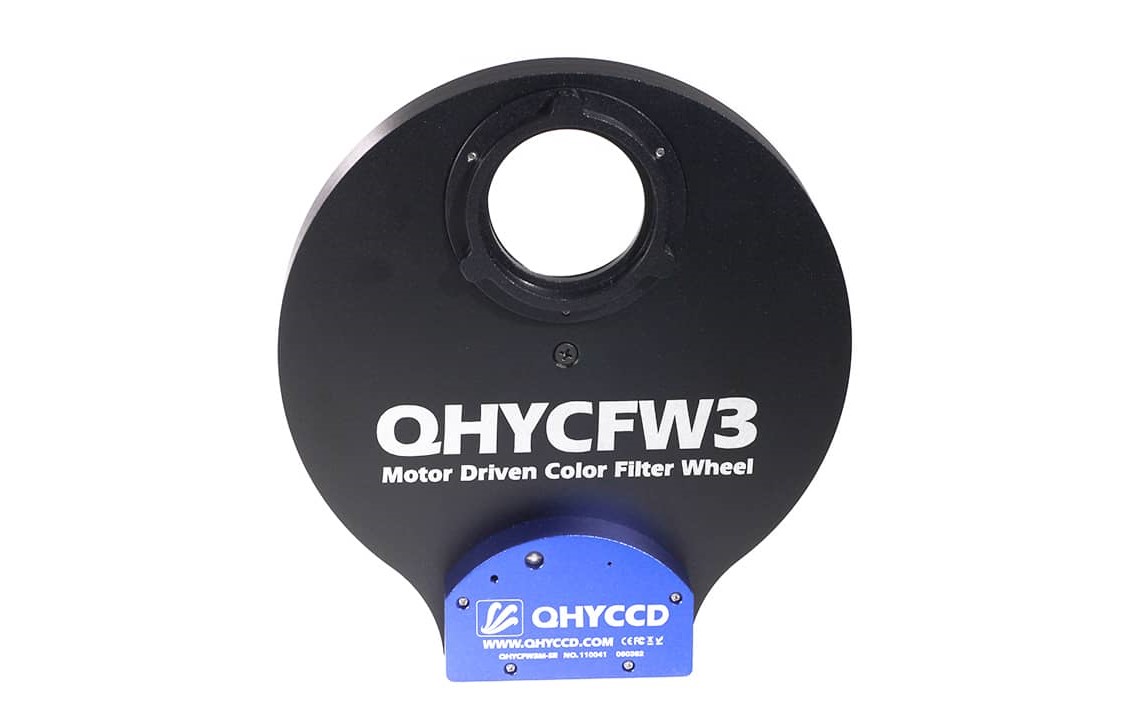QHYCFW3 Motorised Filter Wheel


This device is the partner to my monochrome astrocamera, the QHY294M Pro. It may not be obvious from the image but the wheel sits between the camera and the telescope, and works by rotating its internal holder to one of seven positions such that a specific filter can be selected by the computer controlling the system without having to detach any of the equipment.
The filter wheel is available in a range of configurations for different sizes and number of filters. The specific model I have carries seven filters of 36mm diameter. The size of filter that is needed depends on the size of the camera sensor, and selecting a filter that is too small can lead to some significant loss of image quality as the light cone captured by the telescope is restricted by the filter and produces a circular shadow, or 'vignette' in the final image.
The wheel operates using a digital stepper motor to rotate the carrier wheel inside the housing. This operates with enough precision to ensure the selected filter is always centred over the camera sensor, which brings two distinct benefits. The first is that there is no risk of the filter being off centre in a way that might introduce a shadow at one side of the frame, and the second is that if there are any small dust particles on the filter they are always in the same position relative to the camera sensor. By being in a consistent and predictable position, the shadow from dust particles can be calibrated out of the final image by taking flat frames.
Flat frames are a type of calibration frame that measure (and correct for) uneven illumination of the camera sensor. This unevenness can be because the telescope doesn't capture a wide enough light cone to evenly cover the whole of the camera sensor (vignetting), or it can be due to the dust particles I just mentioned.
You can learn more about the filter wheel on the QHYCCD website.




